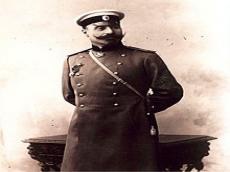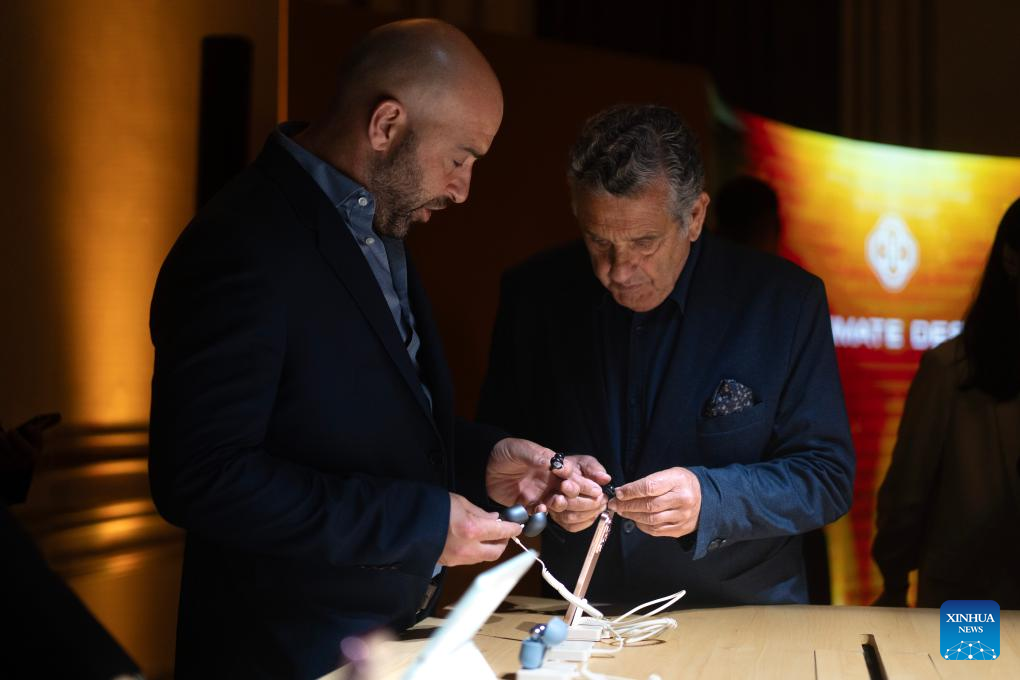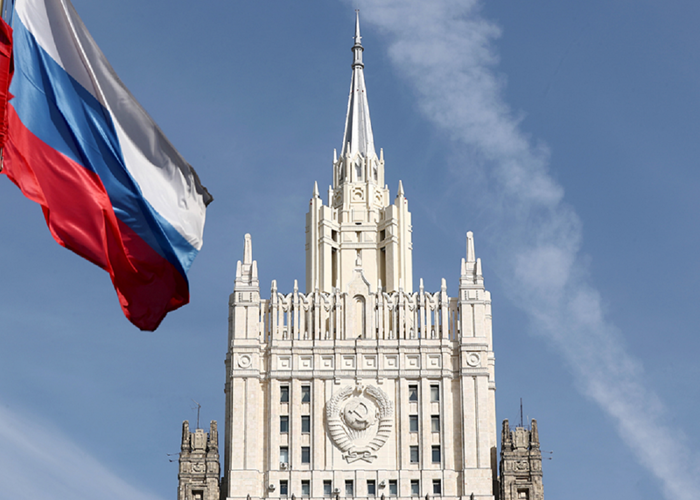|
|
TODAY.AZ / Politics
God of Artillery: General Aliagha Shikhlinski
27 September 2021 [11:42] - TODAY.AZ

By Azernews
By Vugar Khalilov
General Aliagha Shikhlinski is undoubtedly one of the most prominent military men and public figures of Azerbaijan’s history, who made a significant contribution to the swift formation of the national army.
The rich biography, multifaceted and comprehensive life experience of this genius military person, and brilliant mind make it extremely challenging for an author to cover all the important aspects of his life in a short piece of writing. However, his extraordinary services before his nation and outstanding position in history encourage us to highlight some major points of his life story.
As one of the founding fathers of Azerbaijan’s national army in the early 20th century, Shikhlinski with his rich service record and extraordinary talent has a unique place in Azerbaijan’s military history.
Early life, education, scientific career
Shikhlinski was born in 1865, in Azerbaijan’s Gazakh region and received his first education in the Tiflis military school between 1876 and 1883. During this period, he demonstrated diligence in improving his professional skills graduating from the school with high results.
After graduating from the military gymnasium, Shikhlinski continued his education at Mikhailovski Artillery Academy in St Petersburg. The academy was the most advanced military school in Russia and had a great impact on young Shikhlinski to become an artilleryman.
After graduation in 1886, he was promoted in the 39th Artillery Brigade stationed in the Caucasus. During his 14-year service in this brigade, he was involved in multiple military drills and became a professional artilleryman in destroying invisible targets. His special talent was often praised by Russian army generals.
Later, Shikhlinski was promoted several times in the Russian Imperial Army and was appointed the Battery Chief of Transbaykal Artillery Division and the Artillery Committee chairperson.
In 1900, Shikhlinski was sent to the Far East to serve in the Zabaykalye artillery division stationed in the town of Nerchinsk. There he participated in the Russian military campaigns against China and defended Port Arthur in the 1904-05 Russo-Japanese war. During the military operations, Shikhlinski demonstrated great artillery skills in destroying invisible targets and coordinating communications between the artillery batteries. For the first time in the history of artillery, Shikhlinski used the mixed fire method for destroying targets and this method under the term of combined fire was included in military textbooks.
For his services in Port Arthur fighting, Shikhlinski was awarded the rank of lieutenant colonel and with the highest - fourth degree of Saint George Order of the Russian Empire.
The war enabled him to enrich his theoretical and practical knowledge in artillery and ballistics, which he applied as a teacher at the Artillery Academy in St. Petersburg. He wrote an innovative book on artillery ("The Use of Field Artillery in Fighting", 1910) based on his experience during the Russo-Japanese war.
On the eve of World War I, Shikhlinski conducted serious scientific calculations on artillery, wrote an article named “Firing over the head of your own troops” and developed his famous “Shikhlinski triangle”, which envisaged more accurate management of fire by the battery commanders.
In 1912, Shikhlinski was promoted to major general and during World War I, the artillery defence of the Russian capital Petrograd was assigned to him.
Later on, Shikhlinski was sent to the front line. He first served at the headquarters of the Northwestern Front and then was appointed artillery chief of the Western Front. In all these posts, Shikhlinski was closely involved in organizing artillery units in troops and enhancing their combat activities. Due to his dedication and organizing skills, he was appointed commander of the 10th Army in 1917.
National army-building
Following the Bolshevik coup d’etat in Russia in October 1917, Shikhlinski was dismissed from the Russian army and became the commander of the Muslim corps established by the Transcaucasian Commissariat on 11 December 1917. As a first organized military unit after a long period of time, this corps served as a foundation stone for Azerbaijan's independent national army.
In late 1917 and early 1918, as the Muslim corps commander, he had to undertake a great burden to organize the army, when professional officers lacked and almost for a century Azerbaijanis did not have military experience. While building the army from the scratch, Shikhlinski also had to deal with the supply issues and protect the Azerbaijani people against the Armenian-Dashnak threats.
Along with the army-building process, the creation of military education institutions took place under his leadership.
On 28 May 1918, when the Azerbaijan Democratic Republic was proclaimed, most of its territory was under the Bolshevik-Dashnak occupation and Baku was controlled by external forces.
In such a situation, the Azerbaijani government asked the Turkish government for military aid and invited the Caucasus Islamic Army to clear Azerbaijani territories from non-national forces. As a deputy commander of the Caucasus Islamic Army, Shikhlinski was directly involved in the preparation of the liberation plan of Baku from Bolsheviks and Dashnaks on 14-15 September 1918.
With Baku's liberation, a new phase started in the country’s history. Artillery General Samad bay Mehmandarov was appointed the war minister and Shikhlinski deputy war minister and they honorably served in these positions until the fall of the Azerbaijan Democratic Republic on 28 April 1920.
As a deputy minister, Shikhlinski was liable for the formation of units and services of the newly-established army and for the efficient organization of the military enterprises' activities. He often visited military units and education institutions to ensure the quality of services.
He played a crucial role in defending Azerbaijan’s territorial integrity against the Armenian-Dashnak military forces that made territorial claims to Azerbaijan around Karabakh and on the Azerbaijani-Armenian border. His shrewd decisions and quick measures soon prevented the separatist activities of Armenian-Dashnak forces. The punishment of Armenian military forces in Karabakh in 1920 was his historic achievement for what he was upgraded to the rank of colonel-general by the Azerbaijani government.
Late activities
Following the Bolshevik occupation of Azerbaijan, Shikhlinski was mostly involved in scientific activities and trained Azerbaijani officers. He actively worked on military textbooks and military terminology in the Azerbaijani language and numerous military books were prepared by him or under his leadership.
During the 1920s and 1930s, Shikhlinski wrote and published a number of scientific articles in the Azerbaijani press and the article “Future Wars” was one of the most interesting ones among them.
In short, Col-Gen Aliagha Shikhlinski has a great role in Azerbaijan’s history and his immense contribution to world artillery science is still being studied. The God of artillery, Gen Shikhlinski died in 1943 and was buried in Baku.
URL: http://www.today.az/news/politics/210379.html
 Print version
Print version
Connect with us. Get latest news and updates.
See Also
- 18 December 2025 [15:52]
Pashinyan calls for restoration of railway links as Azerbaijani fuel shipment heads to Armenia - 18 December 2025 [14:12]
President Ilham Aliyev awards employees of Azerbaijan University of Architecture and Construction - decree - 18 December 2025 [13:41]
Prosecutor demands life imprisonment for accused war criminal - 18 December 2025 [11:59]
Level of Azerbaijan-Qatar relations, rooted in Islamic solidarity, is gratifying - President Ilham Aliyev - 18 December 2025 [11:45]
Azerbaijan begins oil product exports to Armenia under peace agenda - 18 December 2025 [11:43]
President Ilham Aliyev sends congratulatory letter to Amir of State of Qatar - 18 December 2025 [10:10]
Armenian government against Armenian Church: is today final? - 17 December 2025 [11:33]
President Ilham Aliyev meets with President of United Arab Emirates in Abu Dhabi - 16 December 2025 [12:14]
Establishment of Embassy in Bahrain reflects advancement of bilateral relations - President Ilham Aliyev - 16 December 2025 [11:33]
Dynamic socio-economic development places strategic tasks before trade unions, President
Most Popular
 Hornet's nest has been stirred up: how topic of Western Azerbaijan scared revanchists
Hornet's nest has been stirred up: how topic of Western Azerbaijan scared revanchists
 Huawei debuts new smartphones and devices in Argentina
Huawei debuts new smartphones and devices in Argentina
 Energy Ministry signs new contract with US-based White & Case LLP
Energy Ministry signs new contract with US-based White & Case LLP
 Azerbaijan, Turkiye sign pact to strengthen military security
Azerbaijan, Turkiye sign pact to strengthen military security
 Russia open to consultations on TRIPP initiative with Armenia
Russia open to consultations on TRIPP initiative with Armenia
 Why Iran fears Corridor that Armenia sees as lifeline
Why Iran fears Corridor that Armenia sees as lifeline
 SOCAR Deputy VP says integrity management is key to long-term energy security [EXCLUSIVE]
SOCAR Deputy VP says integrity management is key to long-term energy security [EXCLUSIVE]
